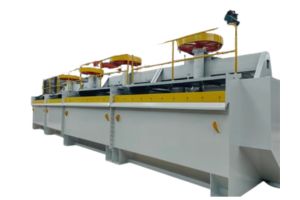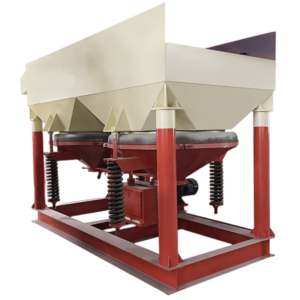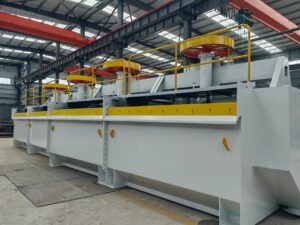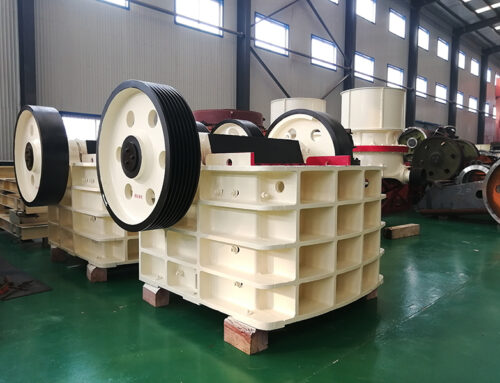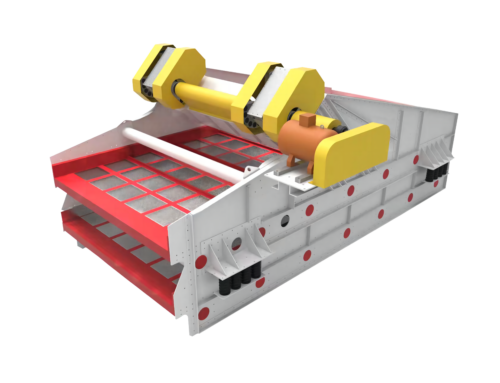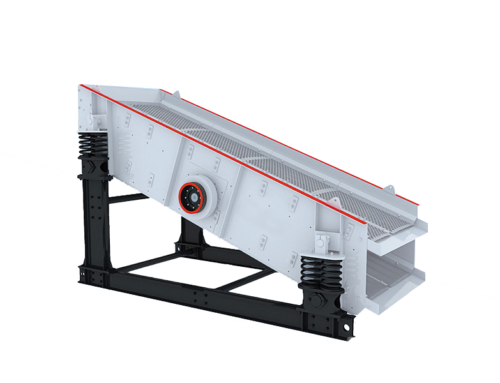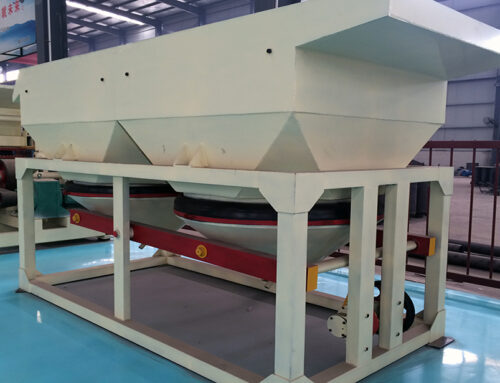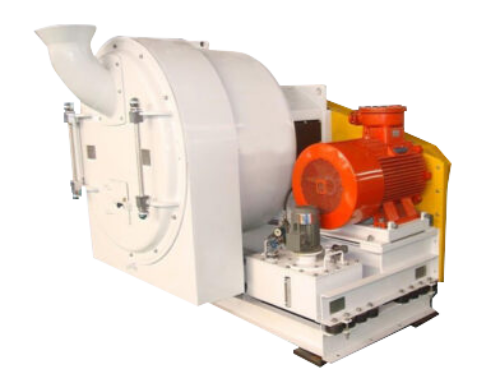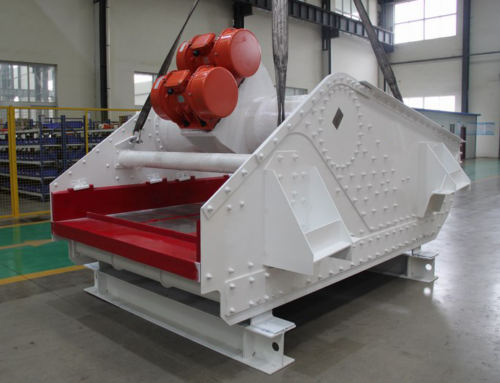Coal beatification plant is an important place for sorting and processing of coal.
一. Purpose of coal beatification
1.Improve the quality of coal: remove the impurities in the raw coal, such as harangue, sulphur, etc., improve the heat content of coal, reduce the ash and sulphur, so that the coal is more in line with the needs of different users.
2.Optimism product structure: through sorting, different quality coal products can be obtained, such as fine coal, medium coal, coal slurry, etc., to meet different market demands and improve the economic efficiency of enterprises.
3.Reduce environmental pollution: reduce the content of harmful substances such as sulphur and ash in coal, and reduce the pollution of the atmosphere when burning.
二. The coal selection process
1.Raw coal preparation: including screening and crushing of raw coal, to process the raw coal into suitable particle size for sorting.
2.sorting operation: according to different coal sorting methods for sorting, to get different quality of coal products. 3.
3.product deteriorating: deteriorating the coal products after sorting to reduce the moisture of the products, which is convenient for storage and transport.
4.coal slurry water treatment: treat the coal slurry water produced in the process of coal beatification, recover the coal slurry therein, realia the recycling of water resources and reduce environmental pollution.
三. Coal selection methods
Gravity Coal Separation:Gravity Coal Separation is a method of separating coal and harangue according to the density difference between the particles, the main process is as follows:
Screening: Raw coal first enters the screening equipment through the screening of raw coal according to particle size into different levels, generally divided into large lump coal (such as particle size greater than 50mm), medium lump coal (such as 13 – 50mm) and the end of the coal (such as less than 13mm).
Crushing: Crushing is required for the portion of raw coal that has a large particle size and does not meet the requirements of the sorting equipment. For example, if there are large lumps of coal exceeding the maximum size allowed by the sorting equipment, a crusher is required to crush them to a suitable size range. The crushed raw coal can be better stratified and sorted in the gravity sorting equipment.
The main methods of gravity separation include heavy media separation, jigging separation and so on.
The main process of jigging coal: after screening and crushing, the raw coal enters the feeding end of the jigger. There is a pulsating water flow system in the jigger, and the movement of this water flow is the key factor of jigging sorting. At the same time as the feed, an appropriate amount of water is added so that the raw coal and water form a mixture stream. Inside the jigger, the pulsating water flow moves up and down periodically. When the water flow rises, the bed is lifted and the particles begin to loosen; when the water flow falls, the bed falls and the particles are rearranged. In this process, the density of the harangue and other particles gradually sink, the density of the smaller coal particles are relatively floating. After a number of pulsating water flow, the raw coal in the jigger formed by density stratification of the bed, the lowest layer is the density of the largest harangue, the middle may be the middle coal, the top layer is the smallest density of fine coal. After the stratification is completed, the jigger discharges the products of the different density layers separately by means of a discharge device. The discharge is usually controlled by means of gates or discharge wheels. Fine coal is discharged from the overflow port of the jigger, and harangue and medium coal are discharged from the bottom or side discharge port of the jigger.
The main process of heavy media selection: in heavy media selection, the first step is to prepare the heavy media suspension. Generally, magnetite powder is used as the heavy weight, and mixed with water to form the suspension. The density of magnetite powder is large, by adjusting the ratio of magnetite powder and water, the suspension can be obtained with suitable density, which is determined according to the nature of raw coal and the desired sorting effect. The raw coal and the heavy media suspension enter the sorting equipment together, such as heavy media cyclone or heavy media sorter. In the cyclone, raw coal particles are stratified by density in the suspension due to the combined effect of centrifugal force and gravity. harangue and other particles with a density greater than the density of the suspension are thrown to the outer wall and discharged along the bottom of the cyclone; fine coal particles with a density less than the density of the suspension are concentrated in the centre of the cyclone, and discharged from the overflow port at the top. In the sorting machine, the same is the use of gravity and the buoyancy of the suspension, so that the coal and harangue separation, fine coal floating, harangue sinking.
2. Floatation coal beneficiation: According to the difference of surface attainability of coal and harangue, under the action of flotation chemicals, coal particles float on the water surface, harangue and other impurities sink to the bottom of the water, so as to realia the separation. Mainly used for sorting fine-grained coal, its process mainly includes the following links:
Preparation:
Screening: the coal slurry water obtained from the Failings or primary coal slurry of other coal separation processes (such as jigging coal separation, heavy media coal separation, etc.) is first subject to screening operations. Particles larger than the upper flotation size limit (typically 0.5mm) are separated out by the screening equipment. These coarse particles may need to be returned to the previous coal preparation process or treated separately, while the fine-grained coal slurry less than 0.5mm goes to the subsequent flotation process.
Thickening: The concentration of the screened coal slurry is usually low and requires thickening to increase the solids content of the slurry. Concentration equipment is generally used thickener, coal slurry water in the thickener in the static, solid particles gradually precipitated to the bottom, to the concentrated coal slurry water to add trapping agent, so that the coal particles more easily attached to the air bubbles. The amount of trapping agent needs to be adjusted according to the nature of coal slurry, particle size distribution and the type of flotation equipment and other factors, generally ranging from a few kilograms to tens of kilograms per tonne of coal slurry.
Slurry mixing:
The coal slurry water after adding chemicals needs to be stirred sufficiently, so that the chemicals and coal particles fully contact and interact to achieve internationalism. The mixing process can make the surface of coal particles uniformly adsorbed trapping agent, and make the foaming agent evenly distributed in the coal slurry to form stable bubbles.
Stirring equipment: usually use mechanical agitator or flotation machine with its own stirring device for stirring. The mixing time and intensity need to be controlled according to the specific situation, not only to ensure the full reaction between the agent and the coal particles, but also to avoid excessive mixing leading to the crushing of the coal particles or the rupture of the bubbles.
Flotation separation:
Flotation machine operation: after slurry adjustment, the coal slurry enters the flotation machine. The flotation machine is the core equipment for flotation coal separation, and its working principle is to use air bubbles to bring hydrophobic coal particles to the liquid surface of the flotation machine, forming a foam layer, while hydrophilic harangue particles remain in the coal slurry. In the flotation machine, the coal slurry and bubble interaction, coal particles and bubbles attached to the formation of demineralize bubbles, demineralize bubbles rise to the liquid surface to form a foam layer, scraped out by the scraper to become a fine coal foam products; harangue and other impurities are left at the bottom of the flotation machine, as Failings discharged.
Product treatment:
Fine coal treatment: the fine coal foam scraped out from the flotation machine contains a lot of water, which needs to be deterred. Commonly used deteriorating equipment are centrifuge, filter press and so on. After deteriorating, the refined coal products can be sold as coking coal or coal products for other purposes.
Failings treatment: The Failings after flotation contain a certain amount of coal sludge and impurities, which need to be further treated. Failings can be deterred through thickening, press filtration, etc. to form Failings cake, which can then be stockpiled or comprehensively utilize. Failings water can then be treated and returned to the coal beatification system for recycling, in order to reduce the waste of water resources and environmental pollution.
3. Special coal beatification:such as wind coal beatification, electromagnetic coal beatification, etc., applicable to specific situations.
四. Environmental protection measures of coal processing plant
1.Dust treatment: adopt sealing equipment, spraying dust reduction and other measures to reduce dust pollution generated in the process of coal beatification.
2.Sewage treatment: construct a perfect coal slurry water treatment system, realia the recycling of water resources and reduce the discharge of waste water.
3.Noise control: choose low-noise equipment, take sound insulation, muffling and other measures to reduce the noise pollution of coal processing plant.
五. The development trend of coal processing plant
1.Intelligent: adopting advanced automation control technology and intelligent equipment, increasing intelligent control of coal preparation process, improving production efficiency and sorting precision.
2.Green environmental protection: strengthen the research and development and application of environmental protection technology, reduce environmental pollution in the coal preparation process, and achieve sustainable development.
3.Fine sorting: with the market’s continuous improvement of coal quality requirements, coal preparation plants will pay more attention to fine sorting, and improve the added value of coal products.

